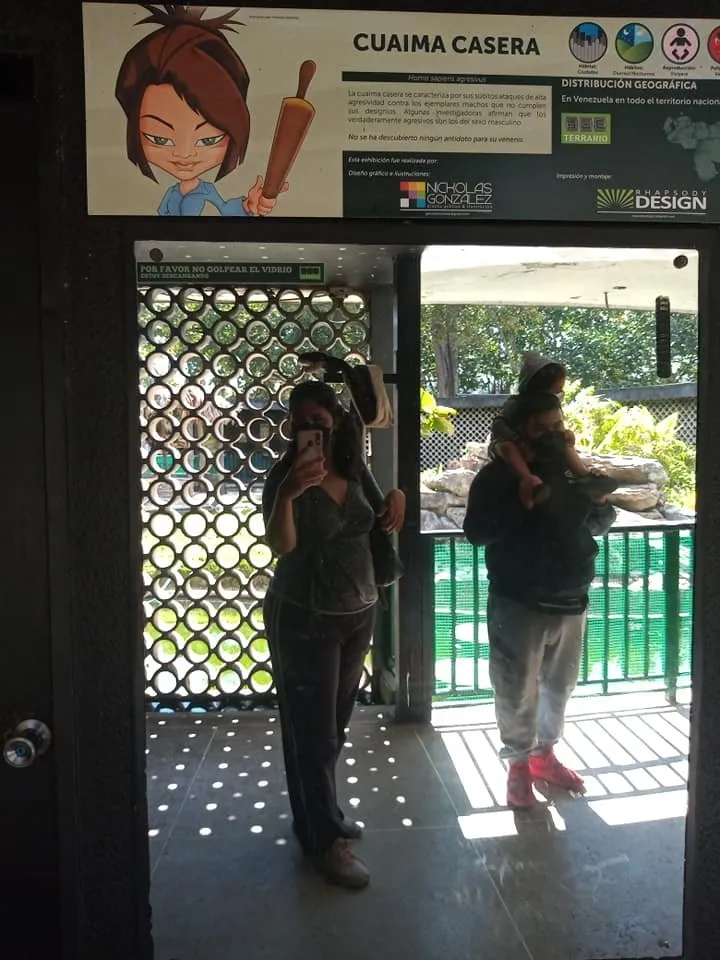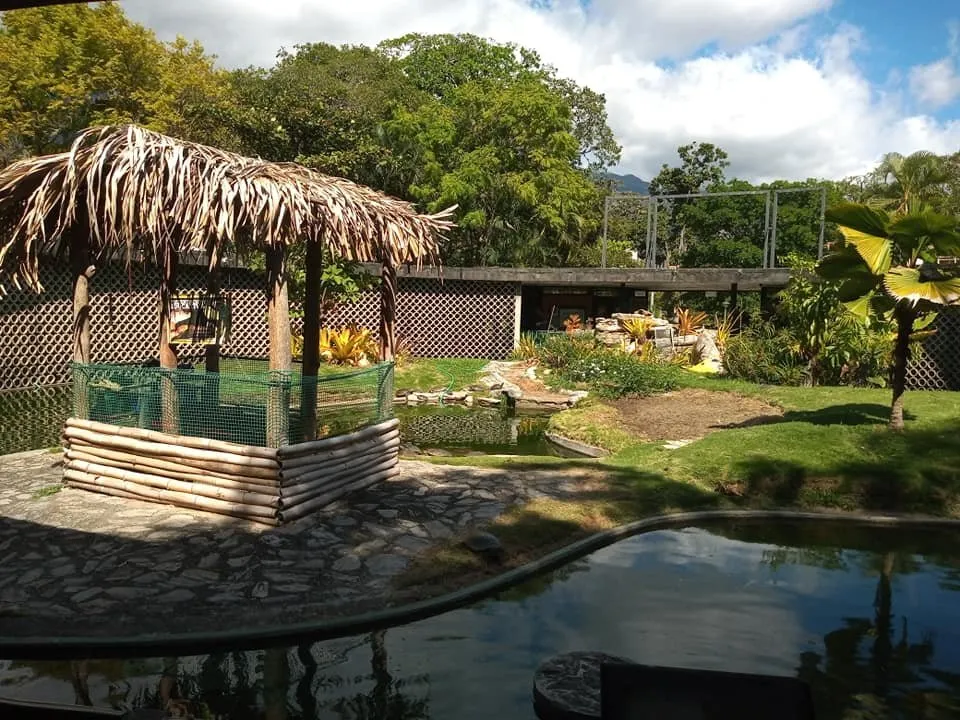
Aunque muchos nunca llegaremos a cruzarnos con una serpiente en la vida real, siempre hay que estar prevenidos y conocer los detalles básicos de los mismos.
En días recientes llegamos temprano al Parque del Este (ahora llamado oficialmente Parque Generalísimo Francisco de Miranda en honor al prócer venezolano) ubicado al este de Caracas-Venezuela, y entre otras atracciones visitamos el Serpentario (terrario) que se encuentra cercano a donde se encuentras los súper populares monitos del parque.
El pase al terrario tiene un costo de 1$ por personas y los fines de semanas tienen show en vivo.
I love snakes and reptiles. Although most people never come across a snake in real life, you always have to be aware and know the basic details of them.
We arrived early at Parque del Este (now officially called Parque Generalísimo Francisco de Miranda in honor of the Venezuelan hero) located in Caracas-Venezuela to visit the Serpentarium (terrarium) that is close to where the monkeys in the park are.
The investment is approximately $1 per person and on weekends they have a live show.
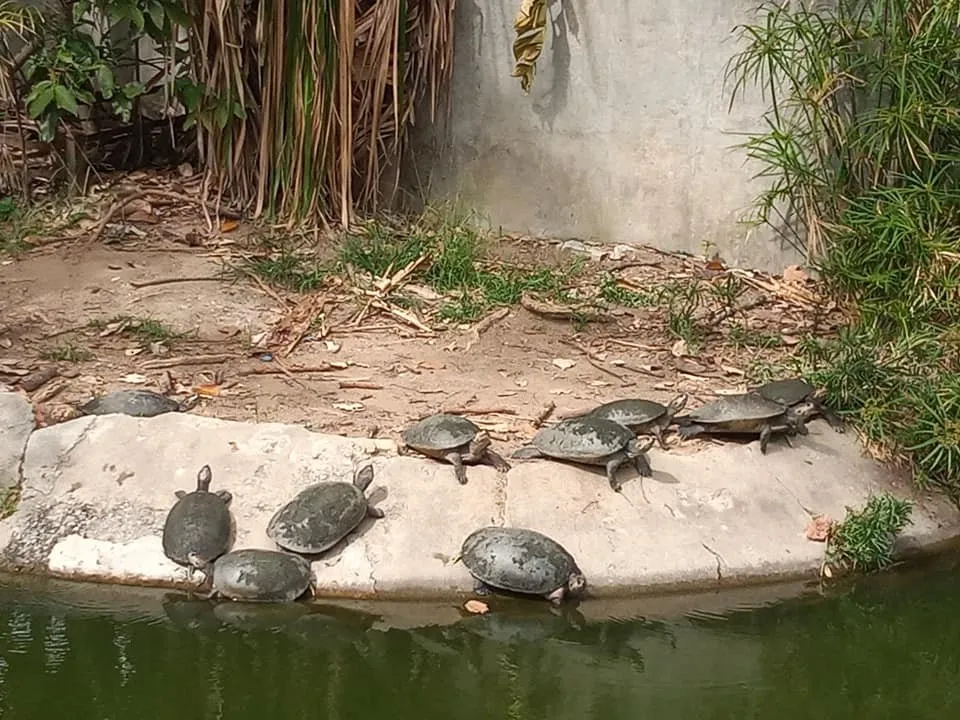
Todos amamos a las tortugas de Buscando a Nemo, lentas simpáticas y divertidas. Aquí puedes alimentarlas durante el recorrido con comida especial para ellas.
Sabías qué…. Las tortugas no poseen cuerdas vocales, pero aún así pueden emitir ciertos sonidos. Sobretodo frente a situaciones de dolor o peligro.
También lloran, pero no como una respuesta emocional, sino para sacar el exceso de agua marina de sus ojitos.
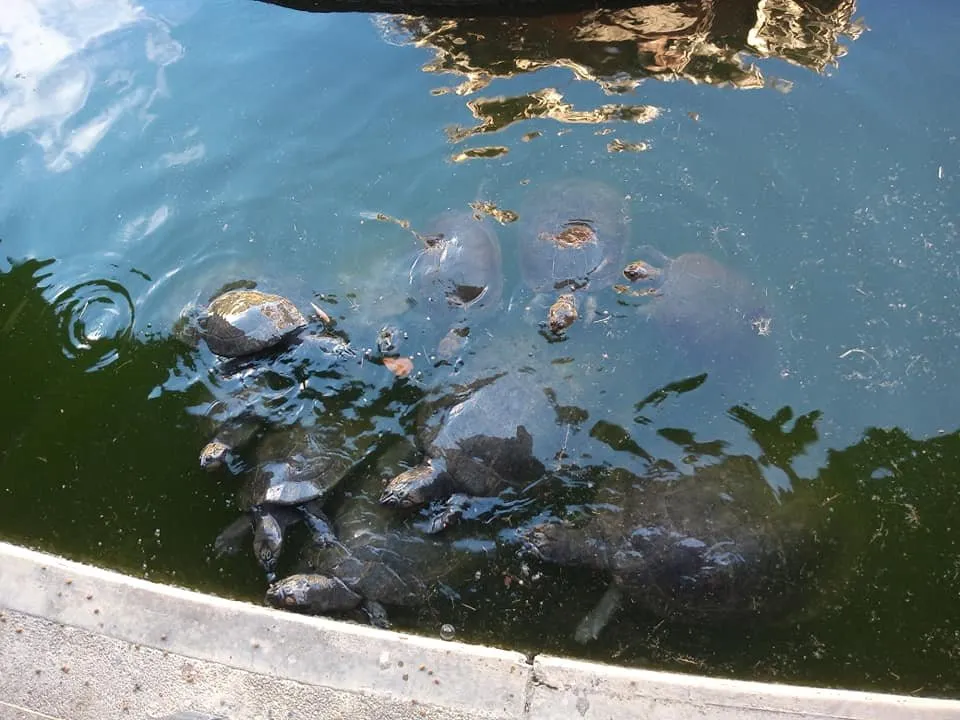
We all love the turtles from Finding Nemo, slow, cute and funny. Here you can feed them during the tour with special food for them.
Did you know…. Turtles do not have vocal cords, but they can still make certain sounds. Especially in situations of pain or danger.
They also cry, but not as an emotional response, but to get the excess seawater out of their eyes.
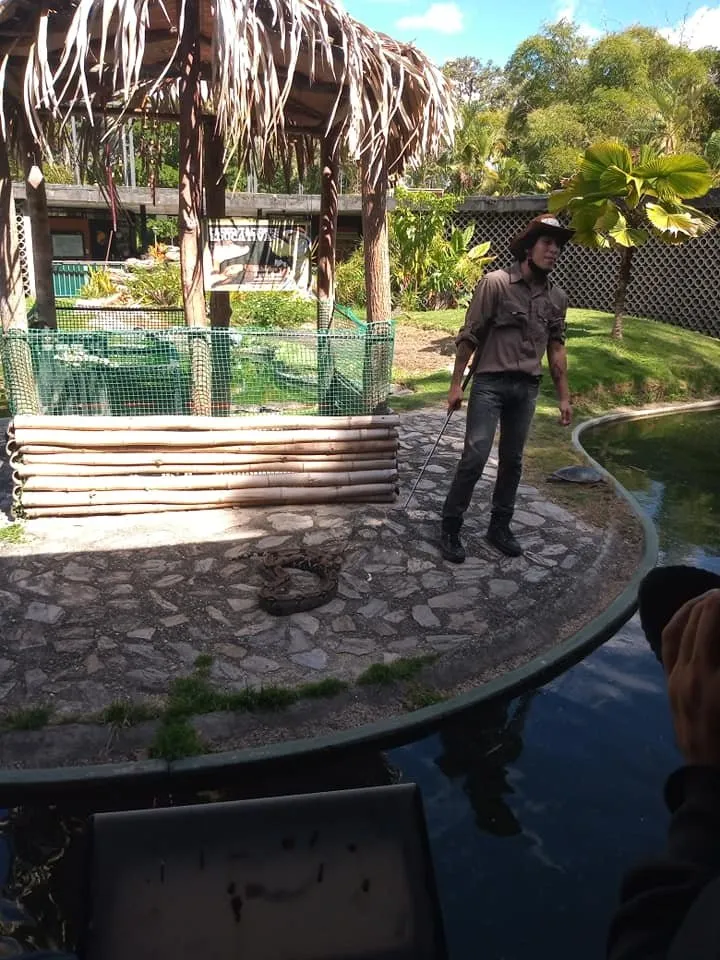
SERPIENTES: VÍBORAS Y CULEBRAS
Las serpientes agrupan a todos los ofidios (más de 3400 especies, que se caracterizan por ser reptiles alargados sin patas). Aproximadamente un 10% de estas son venenosas. Las víboras y culebras son 2 subespecies, y estas últimas agrupan a la mayor cantidad de las especies de serpientes.
Si sus pupilas son redondas lo más probable es que no sea venenosa. Ahora si es elíptica hay alta probabilidad de que sea ponzoñosa. PERO algunas serpientes no venenosas si se sienten acorraladas o en peligro pueden cambiar sus pupilas de redondas a elíptica.
Entre los ojos y las fosas nasales las serpientes venenosas poseen un orificio que permite detectar a sus presas fácilmente. También el cuello de las venenosas suele ser más pronunciado, específicamente triangular mientras que las no venenosas poseen cabezas más redondeadas.
Las venenosas suelen tener colores más llamativos y formas de rombos en su piel.
SNAKE OR SNAKE Is it the same?
No, snakes group all the animals and all the subgenres of this species and snakes are a subgenus of snakes, which group the largest number of them.
Although in each region there may be variations to the rule, if you find a snake you should look at its pupils. If they are round, it is probably not poisonous. But if it is in the shape of an ellipse, they have a high probability of having poisons. BUT some non-venomous snakes if they feel cornered or in danger can change their pupils from round to ellipse.
Venomous snakes have a hole between their eyes and nostrils that allows them to easily detect their prey. Also the neck of the venomous ones is usually more pronounced, specifically triangular while the non-veinous ones have more rounded heads.
The veins tend to have more striking colors and diamond shapes on their skin.
¿Qué podemos hacer para evitar a las serpientes mientras acampamos o disfrutamos de un día de campo?
Quedarnos en zonas con poca vegetación, evitar la hierba muy alta y las ramas en el lugar donde nos instalemos. Evitar los zapatos abiertos y de ser posible llevar botas que protejan nuestros pies, tobillos y parte de la pantorrilla.
Puedes rociar amoniaco en los alrededores del campamento o carpa. Esto no es peligroso para estos animales pero si los repele de forma natural.
No suelen atacar si no se sienten amenazadas, sin embargo bajo situaciones de mucho calor exploraran en busca de lugres más frescos y esto puede llevarlas a aumentar sus encuentros con personas. Igualmente los meses de Junio y Julio son los meses del año en que se presentan mayor número de mordidas.
Ok- Cumplí las reglas pero me mordió la serpiente ¿Ahora que hago?
Muchas serpientes venenosas no son mortales, pero hay que actuar rápido porque el mayor riesgo es el shock anafiláctico asociado al veneno. Por esto es importante tener antihistamínicos tanto orales como inyectables dentro del botiquín de Primeros Auxilios.
Siempre lo más importante es pedir ayuda de ambulancia que nos trasporten rápidamente al hospital. Mientras esperamos la ayuda beber mucho líquido y evitar entrar en pánico, mientras más nervioso este la persona afectada más rápido se difunde el veneno porque aumentan las palpitaciones por minuto.
Hay que evitar colocar torniquetes o cortar la piel. También evita la cafeína y colocar algún tipo de pomada sobre la herida.
What can we do to avoid snakes while camping or enjoying a picnic?
Stay in areas with little vegetation, avoid very tall grass and branches in the place where we settle. Avoid open shoes and if possible wear boots that protect our feet, ankles and part of the calf.
You can spray ammonia in the surroundings of the camp or tent. This is not dangerous for these animals but it repels them naturally.
They do not usually attack if they do not feel threatened, however under very hot conditions they can attack. Likewise, the months of June and July are the months of the year in which the greatest number of bites occur.
Ok- I followed the rules but the snake bit me. Now what do I do?
Many venous snakes are not fatal, but you have to act fast because the biggest risk is anaphylactic shock associated with the venom. This is why it is important to have both oral and injectable antihistamines in the First Aid kit.
The most important thing is always to ask for ambulance help to transport us quickly to the hospital. While we wait for help, drink plenty of fluids and avoid panicking, the more nervous the affected person is, the faster the poison spreads because the palpitations per minute increase.
Avoid placing tourniquets or cutting the skin. Also avoid caffeine and putting some type of ointment on the wound.
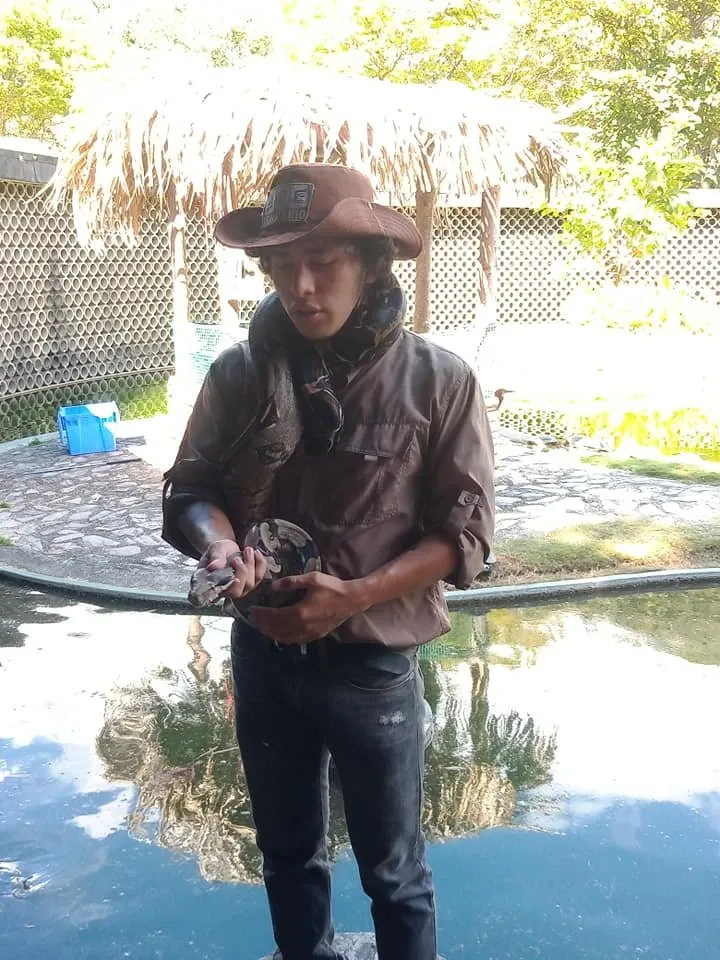
Los cocodrilos cachorros tienen mucha fuerza en su mordida, por esto tienen bosal y pueden crecer muchos metros.
Cuando lloran su sonido es similar a un rayo láser.
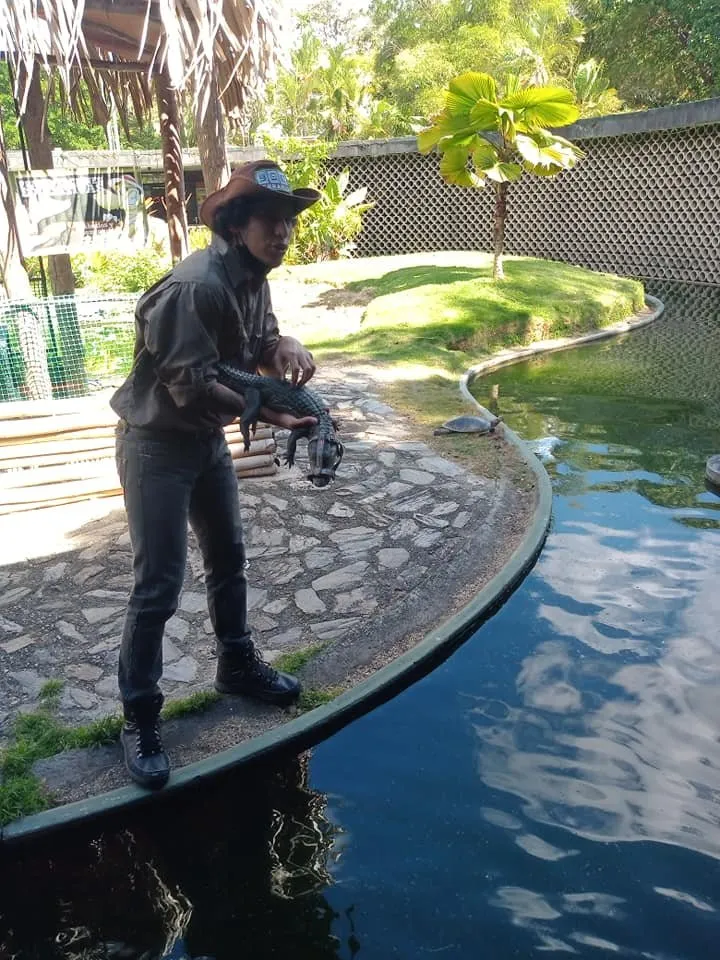
The crocodile puppies have a lot of force in their bite, which is why they have a bosal and can grow many meters.
When they cry their sound is similar to a laser beam.
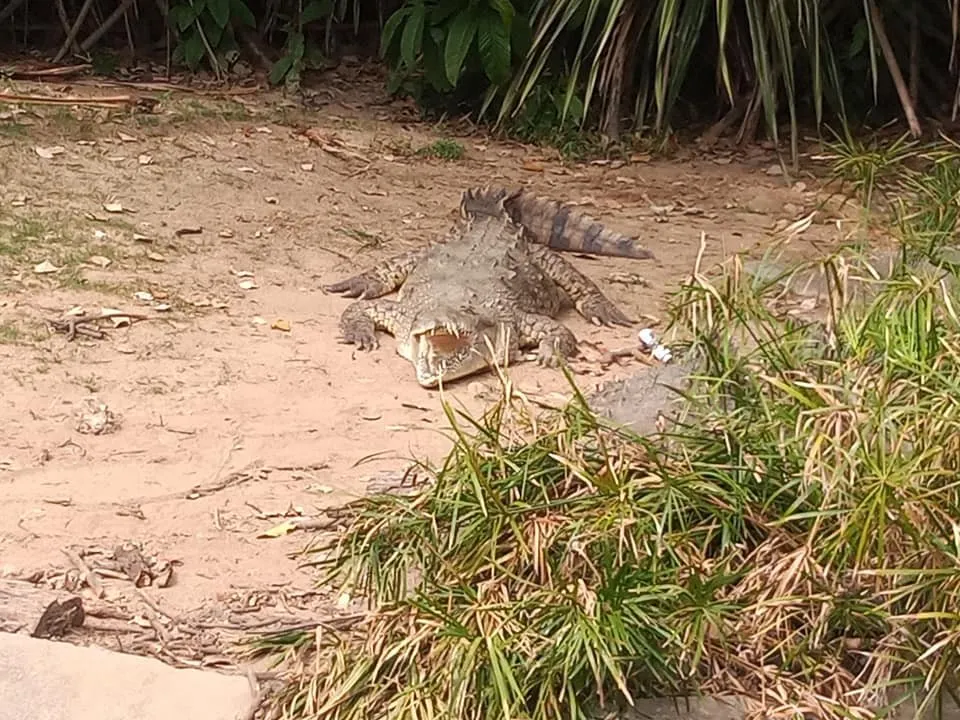
Cuando crecen suelen alcanzar los 3 ó 4 metros. Pero algunos bien alimentados pueden llegar a los 7 metros.
When they grow they usually reach 3 or 4 meters. But some well fed can reach 7 meters.
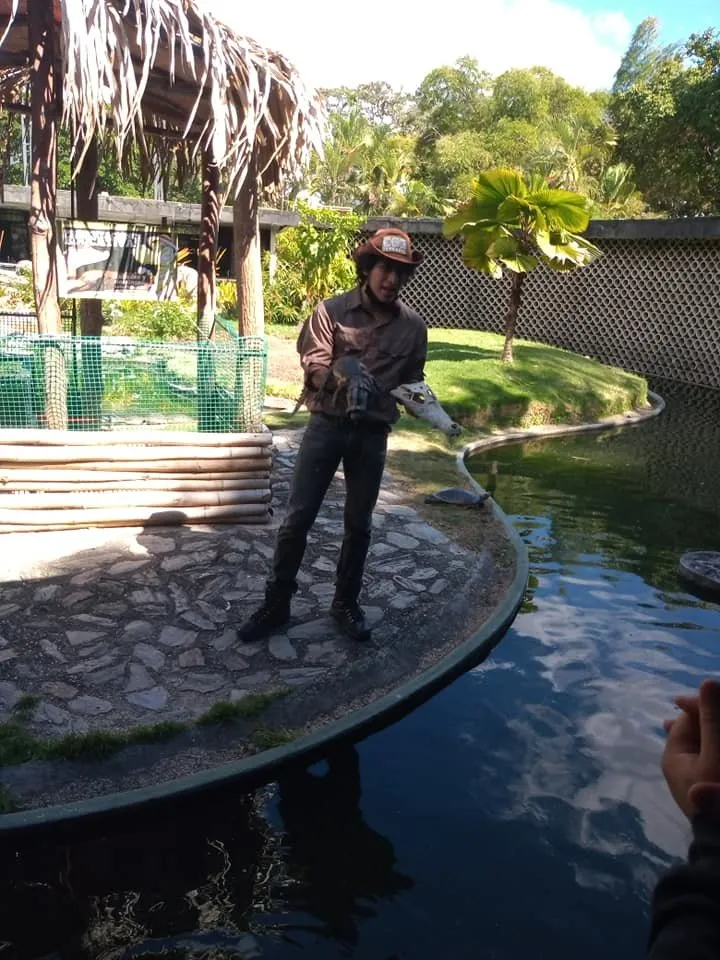
Al finalizar el recorrido hay un espejo para tomarse una foto como Cuima Casera, lo cual me pareció muy jocoso y divertido.
At the end of the tour there is a mirror to take a picture as "Cuima Casera". which I found very humorous and amusing.
